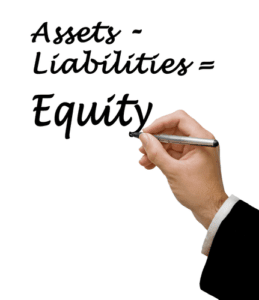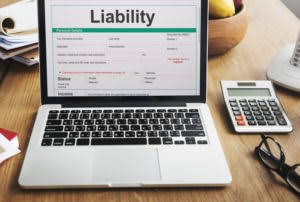
If there is a difference between disposal proceeds and carrying value, a disposal gain or loss occurs from a company’s financial records. If there is a HOA Accounting difference between disposal proceeds and carrying value, a disposal gain or loss occurs. Gains are increases in the business’s wealth resulting from peripheral activities unrelated to its main operations. Recall that revenue is earnings a business generates by selling products and/or services to customers in the course of normal business operations.
Selling a Fixed Asset (Partial Year)
- This method involves determining the original purchase price of the asset and adjusting it for factors such as depreciation, improvements, and inflation.
- By examining recent transactions of comparable assets in the market, we can gain insights into the fair value of the asset being disposed of.
- For example, a machine has been installed in a factory and after a useful working on its life period needs to be replaced with a new model.
- If you want to implement asset tracking software in your organization, you can contact us we will be happy to assist you.
- A business may donate fixed assets to charities, educational institutions, or government agencies.
- When a business disposes of a fixed asset, it may result in either a profit or a loss, depending on the difference between the asset’s net book value (NBV) and its selling price.
A business may donate fixed assets to charities, educational institutions, or government agencies. A company exchanges a machine with a book value of $15,000 (original cost $40,000 and accumulated depreciation $25,000) for a new machine valued at $20,000. The computer’s original cost was $3,000, and it has accumulated depreciation of $2,000.

Impact on Financial Statements
In this section, we will explore some of the common methods of disposal, such as selling, donating, recycling, scrapping, landfilling, and more. We will also discuss the advantages and disadvantages of each method, and provide some examples of how they can be applied in different scenarios. Start the journal entry by crediting the asset for its current debit balance to zero it out. Then debit its accumulated depreciation credit balance set that account balance to zero as well. Debit Cash or the new asset if either is received in exchange for the one disposed of, if applicable. Finally, debit any loss or credit any gain that results from a difference between book value and asset received.
D. Cash Ledger
Assets that have been well-maintained and are in good working order typically command higher prices in the resale market. Disposal value is used in accounting according to International Financial Reporting Standards (IFRS) when an entity is accounting for the depreciation of an asset. IFRS requires that an entity depreciate an asset over its useful life, and the useful life is defined as the period over which an asset is expected to be used by the entity. The disposal value is used in accounting as the residual value of an asset, which is the estimated value of the asset at the end of its useful life. Since the cash proceeds ($1.5 million) are less than the carrying amount (i.e. $2.6 million), the disposal has resulted in a loss of $1.1 million ($2.6 million – $1.5 million).
Asset Does Not Fit into Your Current Requirements

‘Cost of the asset’ is the amount you paid to purchase the asset and ‘salvage value’ is the cash you receive when you sell the asset at the end of its useful life. These types of assets can’t easily be converted into cash, but they add value to the business and can contribute to its long-term growth. An employer cannot be entitled both to a revenue deduction and to have a disposal value of nil on the transfer of an asset to an employee. If the employer has claimed a revenue deduction, the transfer must have passed the wholly and exclusively test. If it has passed the wholly and exclusively test, it cannot have been https://www.advantage-intec.co.jp/why-was-my-check-returned-all-check-reason-codes/ for no consideration and so it cannot have been a gift.
- The first step is to determine the book value, or worth, of the asset on the date of the disposal.
- Another strategy involves staying informed about market trends and technological advancements that could affect an asset’s resale potential.
- A company may no longer need a fixed asset that it owns, or an asset may have become obsolete or inefficient.
- This applies if the value of the asset is higher than the amount in the pool.
- Partial-year depreciation to update the truck’s book value at the time of sale could also result in a gain or break even situation.
- The disposal account format involves debiting the relevant asset disposal account against the asset’s realized value and the gain recorded in Profit & Loss A/c.
- When the assets are old, wear out or become obsolete, the company would consider disposing of the book.
- Effective asset management involves not only acquiring and maintaining assets but also strategically planning for their eventual disposal.
- Start the journal entry by crediting the asset for its current debit balance to zero it out.
- The plant, originally costing $2,000,000 with accumulated depreciation of $1,500,000, was sold for $300,000.
Asset disposal is the removal of a long-term asset from the company’s accounting records. It is an important concept because capital assets are essential to successful business operations. Moreover, proper accounting of the disposal of an asset is critical to maintaining updated and clean accounting records.

If asset disposal proceeds are less than disposal value it’s carrying amount, the loss on disposal is realized, which will then be recorded in the general journal. For instance, if a piece of equipment was purchased for £50,000 and has depreciated by £30,000 over its useful life, its estimated disposal value might be around £20,000. The calculation of disposal value can be influenced by various factors, including the asset’s condition, market demand, and technological advancements.

Gain on Disposal of a Fixed Asset
Proper documentation and tax reporting ensure that balancing adjustments are accurately applied. Balancing adjustments depend on the difference between the disposal value of an asset and its tax-written-down value. The relocation supported the company’s broader strategy to improve market access and enhance customer experience, with potential for increased revenue in the new location.
